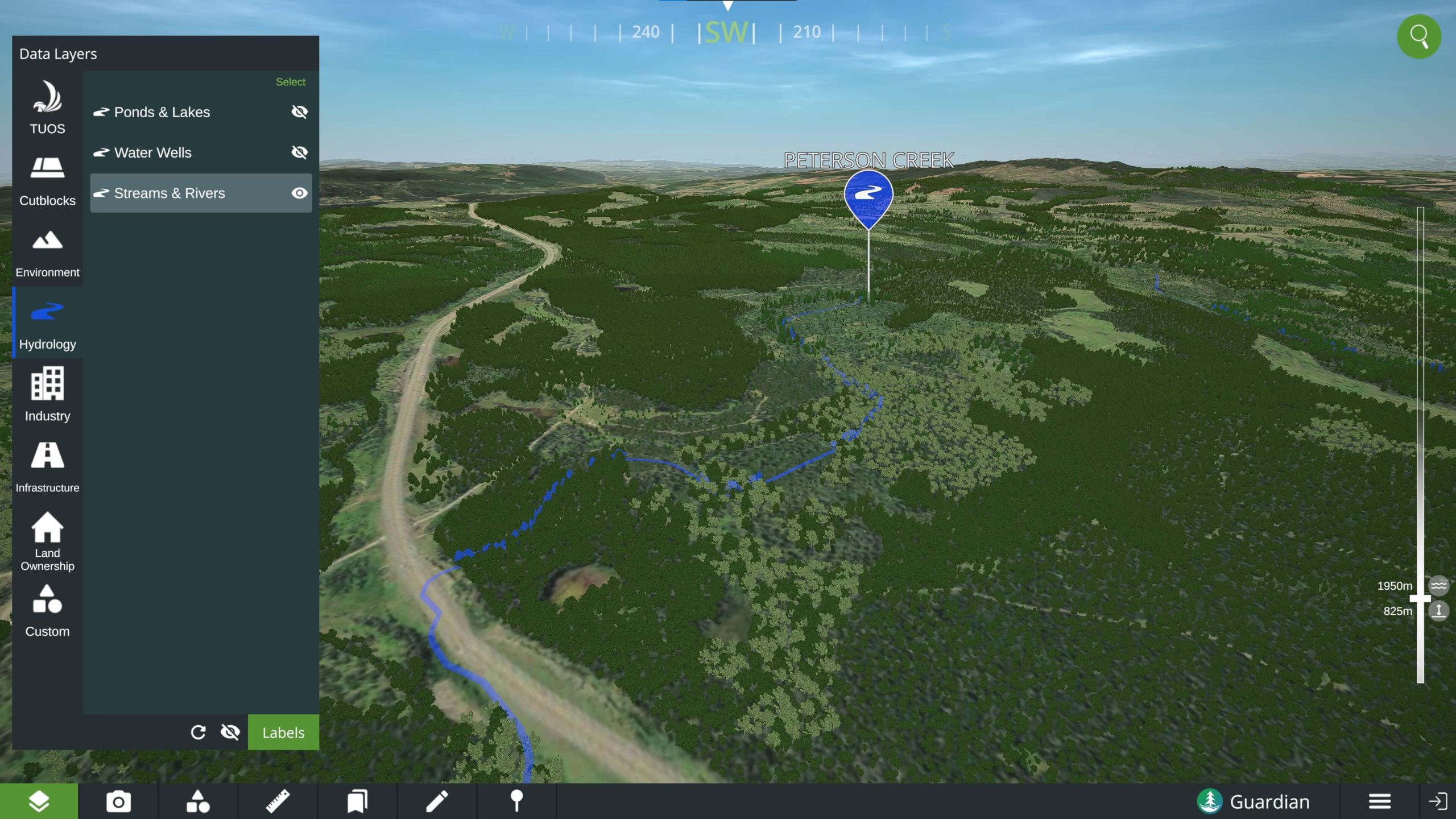
When building LlamaZOO’s TimberOps technology, a tool that allows 1 to 1 scale 3D topographic visualizations of the land, aka digital twins, I had my first “Aha!” moment for Guardian – I realized how many other use-cases this technology could have and how readily it could be deployed to First Nations across British Columbia.
The success we saw with assisting the Mowachaht/Muchalaht on Vancouver Island in digitally mapping their 350,000+ hectares of Territorial Land was promising. The software’s role in supporting high stakes negotiations regarding land use with government and resource industry players in logging was a huge validator for us at LlamaZOO.
Today, with the launch of Guardian, we are able to provide unparalleled 3D data modeling that is accessible, and designed exclusively for Canada’s Indigenous Peoples. In fact, we are already partnering with 15 Nations across the province to map 10s of millions of hectares of land.
Accessible technology can help right power imbalances
To many people, accessibility means different things; for Guardian, accessibility means access to important information and data, which enables community and chief and counsel members to make informed decisions around what will impact their lands, while ensuring the Nations’ economic opportunities are maximized. The primary objective with Guardian is to create a level playing field for them as they meet with provincial government and industry players who have access to funds, resources, and data to facilitate these discussions – now the Nation, as the stewards of the land, will as well.
In addition to supporting the referral process, Guardian has opened up collaborative connectivity opportunities through partnerships with BC’s Digital Supercluster, which is working with Microsoft, Rogers and other key partners to bring high speed internet to remote regions in BC, providing access to our virtual repository of their Nation’s unique data.
Bringing equitable information and data to the table for all stakeholders, whether First Nations community members, government or forestry/mining is a win-win.
Sky’s the limit with Guardian: from fighting forest fires to embedding history
Guardian is showing great value in areas that are inherently connected to land use preservation, like providing a space for Elders to have a virtual visual over the topography of their historic territory, with the consolidation of digital maps comprised of 100 years of data, to see culturally, historically, geographically important components of their unique and rich histories. Guardian allows ancestral knowledge from Elders to be embedded as multimedia into the digital twin of the land, providing a learning tool for everyone, from the younger, new generations, to those wanting to have a richer understanding of their history and culture.
Our Guardian technology is also showing exciting promise in other areas, like forest fire prevention, through visually mapping out underbrush; which is a leading fuel type for fires. Carbon footprint offsets, and sequestration potential; when environmental strategies and activities are included, a more comprehensive, robust projection of long-term impacts of land use and ramifications of carbon impact can be developed. Digitally “repatriating” artifacts and embedding them into the twin of the land, and providing a tangible vehicle for safekeeping rich, sometimes oral-histories of language, cultural, ancestral knowledge and turning them into 3D experiences for new generations to learn, engage and feel connected to history.
As more transparency and collaboration is achieved, we’re excited to see the role that Guardian can play in facilitating critical conversations with industry, and more importantly how it can facilitate the safekeeping of First Nation cultures, stories, and land, for generations to come.
Charles Lavigne is the CEO and Co-Founder of LlamaZOO.

This is a fantastic way of cutting through the clutter of so many variables that affect the land including treaties, cultural needs, history, stories, and anything attached to the land including individual trees and water courses. By mapping the land and presenting it in a virtual environment all discussions can use a common source of all the information so that all factors are taken into account. Each part of the land has stories and bringing everyone there in a real VR representation of the land empowers all participants by putting them in
the same environment and with complete information. This means a clearer understanding, informed planning and better negotiation.